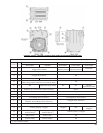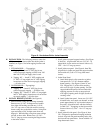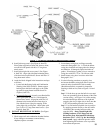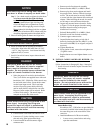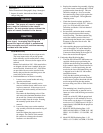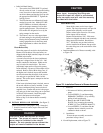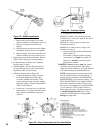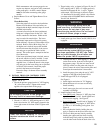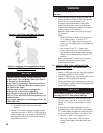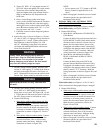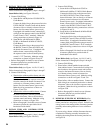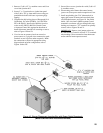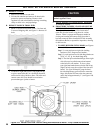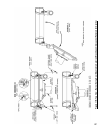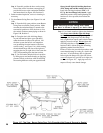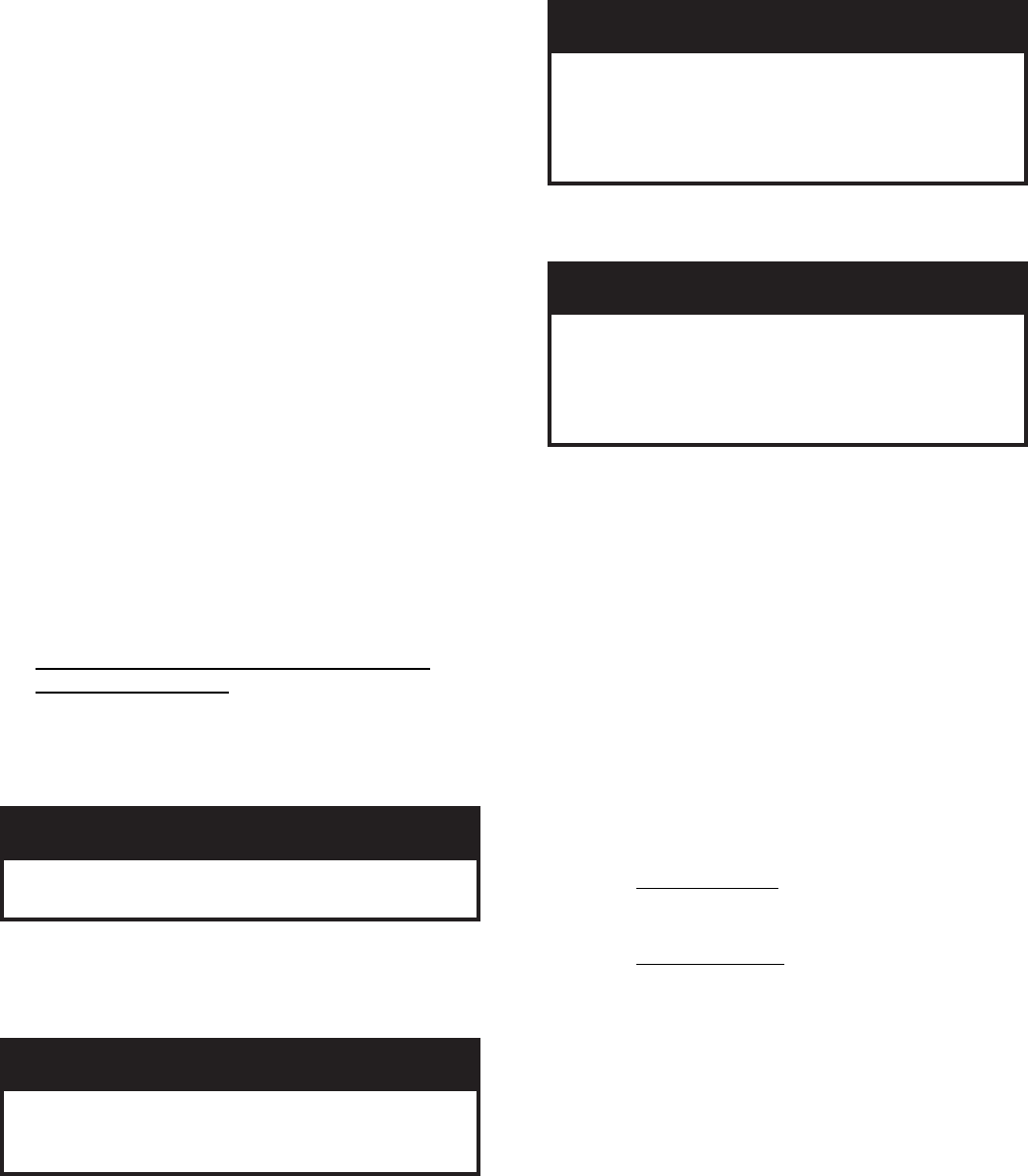
21
Riello manometers and vacuum gauges do not
require any adapters, and can be safely connected
to the pump ports. An NPT x metric adapter
must be used when connecting other gauge
models.
g. Replace Burner Cover and Tighten Burner Cover
Screws.
Water Boilers Only
Select the proper oil nozzle for the installation.
Burners for knockdown V8 water boilers are
shipped with the high (standard) input oil nozzle
installed in the burner.
A second oil nozzle for the lower (minimum)
fi ring rate is shipped loose for the V83 - V86
models, attached to the burner. Either nozzle
may be used with water boilers. The lower
(minimum) input nozzle will provide greater
boiler effi ciency. However, boiler output will be
reduced. Refer to Table 1B for fi ring rates. If
the higher rate is desired, inspect the installed
nozzle and assure that the nozzle is the correct
size and type as specifi ed in Table 6 of this
manual. The nozzle input is stamped on the hex
fl at of the nozzle.
If the lower (minimum) input is desired, remove
the nozzle which was factory installed. Locate
the lower (minimum) fi ring rate nozzle that is
supplied loose. Confi rm the nozzle is the proper
size and type for the lower fi ring rate as specifi ed
in Table 6 of this manual. Install the proper
nozzle in the burner nozzle adaptor.
Proceed to Step c for burner drawer assembly
removal.
N. INSTALL TRIM AND CONTROLS WITH
BECKETT BURNER. - Steam Boiler Only (see
Figures 1D & 5).
1. Thread the pressure gauge into the ¼” NPT tapping
"B", of the front section. Tighten with wrench
applied to the square shank of the gauge.
NOITUAC
-esaceguagehtoterusserpylppatonoD
.sgnidaeretaruccaninitluseryamsiht
2. Thread 1½” NPT x ¾” NPT bushing and a ¾” NPT
drain valve into the 1½” NPT tapping located in the
lower right corner of the front section. Tighten with
wrench.
ECITON
rofdesusi"H"gnippaTnoitcesraerrewoL
maetsnonruteretasnednocdradnats
.sreliob
3. Thread safety valve, as shown in Figure 1D, into ¾"
NPT coupling and ¾” NPT x 8” nipple previously
installed in Paragraph H, No. 1, step b. Tighten
with wrench. Pipe discharge as shown in Figure
14. Installation of the safety (relief) valve must be
consistent with ANSI/ASME Boiler and Pressure
Vessel Code, Section IV.
GNINRAW
ebtsumgnipipegrahcsidevlavytefaS
folaitnetopetanimileotroolfraendepip
aeraynaniepiptonoD.snrubereves
lla
tsnitonoD.ruccodluocgnizeerferehw
.spacrosgulp,sevlavffo-tuhsyna
4. Install probe type Low Water Cut-Off (LWCO) if so
equipped.
GNINRAW
snoitcurtsnis’rerutcafunamehtdaeR
reporprofOCWLeborpehthtiwdekcap
nolfeTesuTONOD.noitacilppaepodepip
nac
nolfetfoesU.sdaerhteborpnoepat
.lanoitareponiOCWLeborpehtredner
a. Thread probe into ¾” NPT tapping "C" located
on the front section, down and to the right of
the pressure gauge. Slip the low water cut-off
(LWCO) control over the probe and clamp in
place. Connect the wire(s) between the probe and
control per the manufacturer’s instructions.
b. Install the gauge glass using the two ½” NPT
tappings to the right of the probe LWCO.
5. Install fl oat-type LWCO, if so equipped.
See Figure 8.
a. Install nipples and unions in "D" Tappings.
b. Mount hardware to low water cut-off body.
Install assembly.
c. Install water gage glass on low water cut-off
assembly's tee fi ttings.
6. Install Pressure Limit Control.
a. Float LWCO only: Remove ¼" NPT plug from
top of Low Water Cut-Off. Install Syphon and
Limit into this tapping. See Figure 8.
b. Probe LWCO only: Install Limit in Tapping "A"
using ¾" NPT x 3" long nipple, ¾" NPT elbow,
¾" NPT x ¼" NPT bushing, and syphon. See
Figure 9.
c. Do not tighten the limit by holding the case;
apply a wrench to the brass hex below the case.
d. Level an L404A pressure limit by carefully
bending the syphon until the limit's leveling
indicator hangs freely with its pointer directly
over the index mark inside the back of the case.



